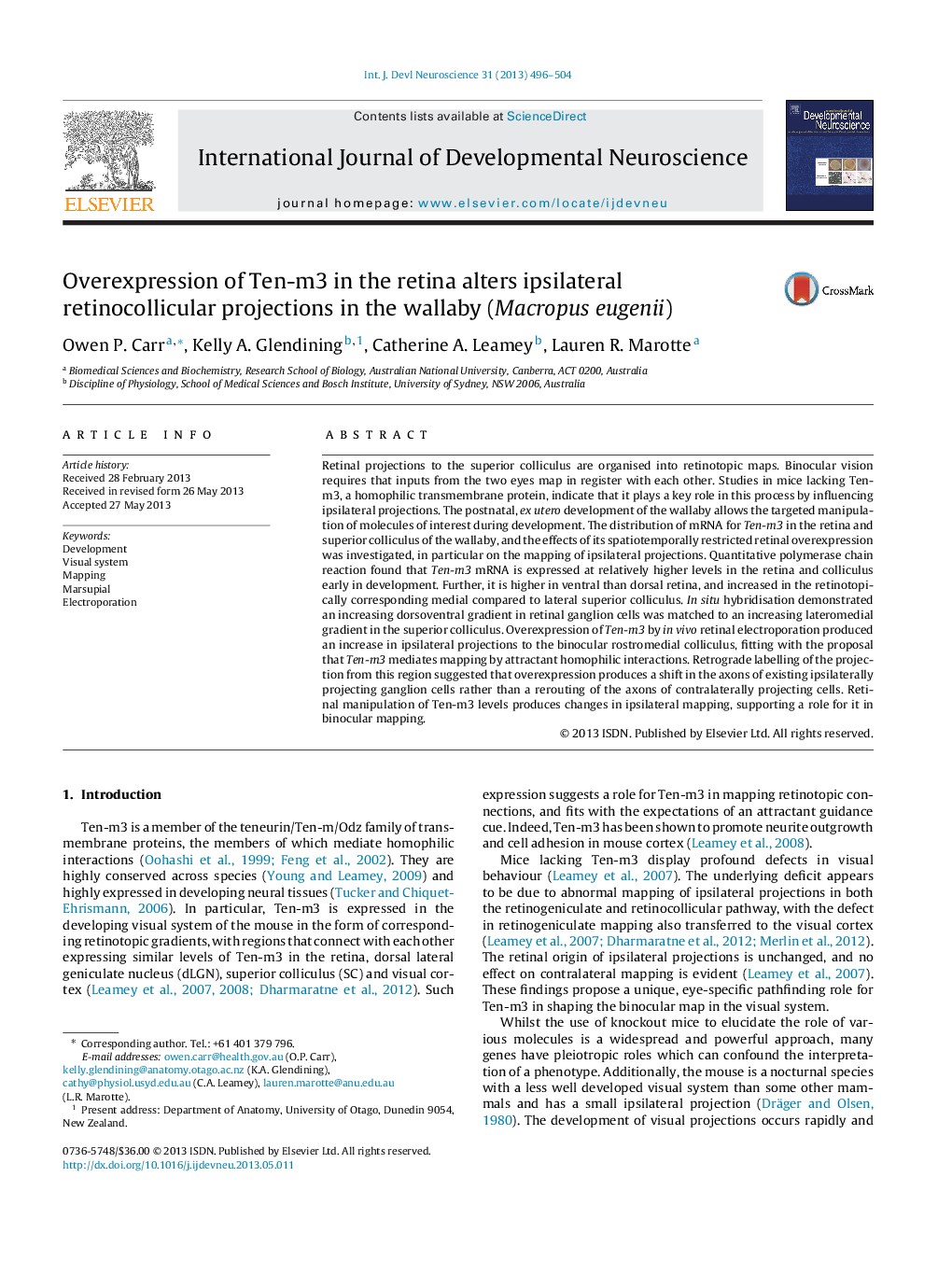| Article ID | Journal | Published Year | Pages | File Type |
|---|---|---|---|---|
| 5893915 | International Journal of Developmental Neuroscience | 2013 | 9 Pages |
Abstract
Retinal projections to the superior colliculus are organised into retinotopic maps. Binocular vision requires that inputs from the two eyes map in register with each other. Studies in mice lacking Ten-m3, a homophilic transmembrane protein, indicate that it plays a key role in this process by influencing ipsilateral projections. The postnatal, ex utero development of the wallaby allows the targeted manipulation of molecules of interest during development. The distribution of mRNA for Ten-m3 in the retina and superior colliculus of the wallaby, and the effects of its spatiotemporally restricted retinal overexpression was investigated, in particular on the mapping of ipsilateral projections. Quantitative polymerase chain reaction found that Ten-m3 mRNA is expressed at relatively higher levels in the retina and colliculus early in development. Further, it is higher in ventral than dorsal retina, and increased in the retinotopically corresponding medial compared to lateral superior colliculus. In situ hybridisation demonstrated an increasing dorsoventral gradient in retinal ganglion cells was matched to an increasing lateromedial gradient in the superior colliculus. Overexpression of Ten-m3 by in vivo retinal electroporation produced an increase in ipsilateral projections to the binocular rostromedial colliculus, fitting with the proposal that Ten-m3 mediates mapping by attractant homophilic interactions. Retrograde labelling of the projection from this region suggested that overexpression produces a shift in the axons of existing ipsilaterally projecting ganglion cells rather than a rerouting of the axons of contralaterally projecting cells. Retinal manipulation of Ten-m3 levels produces changes in ipsilateral mapping, supporting a role for it in binocular mapping.
Related Topics
Life Sciences
Biochemistry, Genetics and Molecular Biology
Developmental Biology
Authors
Owen P. Carr, Kelly A. Glendining, Catherine A. Leamey, Lauren R. Marotte,
